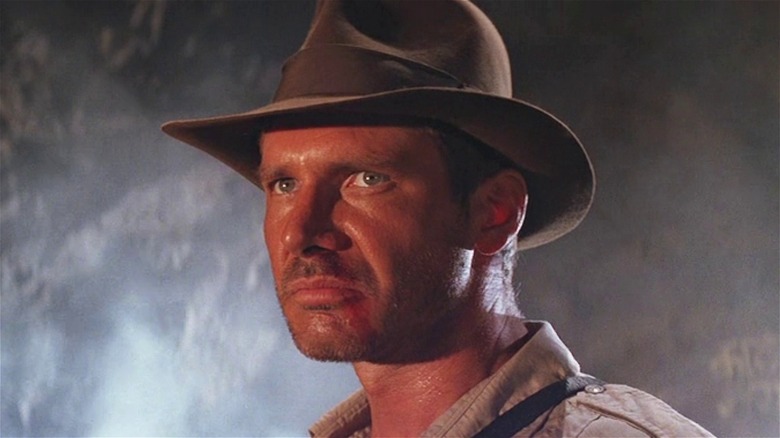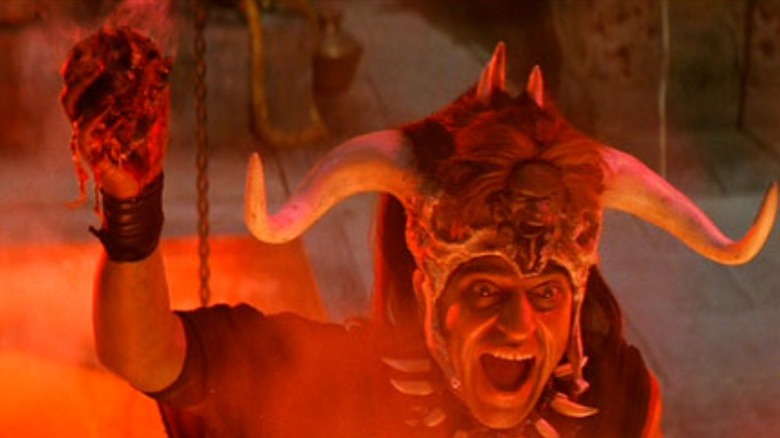The Indiana Jones Movie You Didn't Know Was Banned In India
Harrison Ford was quickly becoming a household name as the 1970s turned to the 1980s. With two appearances as Han Solo under his belt — three if you count the notoriously horrific "Star Wars Holiday Special" from 1978 — as well as spots in the likes of "Apocalypse Now" and "American Graffiti," he was ready to lead a franchise of his own in the new decade. Thankfully, the creative team of Steven Spielberg and George Lucas had just the role in mind for the Hollywood icon-to-be: Indiana Jones, the main character of 1981's "Raiders of the Lost Ark."
Serving as a tribute and reinvention of early 20th-century film serials, "Raiders" took audiences on a wild goose chase across the world in search of the legendary Ark of the Covenant. Their guide was Dr. Henry Jones Jr., who not only worked as a college professor to pay the bills but went above and beyond to unlock the secrets of history through archeology and punch no shortage of Nazis along the way. By the time it left the big screen, "Raiders" grossed nearly $390 million, left critics largely impressed, and kickstarted a whole series that would play out in the years to come.
At the time of this writing, there are four "Indiana Jones" films, with a fifth currently in development. Those that have seen release so far are recognized the world over and, for the most part, adored. Although, there are exceptions to this praise, like the country of India's outright banishment of a specific Indy installment.
Temple of Doom insultingly misrepresented India and its people
The first sequel to "Raiders of the Lost Ark" hit theaters in 1984, titled "Indiana Jones and the Temple of Doom." This "Indiana Jones" feature transported moviegoers back to a year before the events of its predecessor to a village in India known as Mayapore, which had been the target of child kidnappings and theft — specifically of one of the sacred Sankara Stones. As it turns out, a cult led by the evil Mola Ram (Amrish Puri) was responsible, capturing children and bringing them below ground as slaves in their mine. Thankfully, Dr. Jones stepped up to the plate to save the day with his whip in his hand and fedora on his head.
Given that India is a real location on Earth, surely "Temple of Doom" was filmed there, right? Wrong. Director Steven Spielberg had every intention of taking the production there, but government officials got ahold of the script and determined they wanted nothing to do with Indy's latest adventure. Strong content such as human sacrifices and child slavery, in addition to misrepresentation of Indian dietary practices (chilled monkey brains, anyone?) and the Hindu goddess Kali were not looked upon favorably. Therefore, the project was shot in Sri Lanka and the United Kingdom instead (via Vogue).
"Temple of Doom" is a classic, but all things considered, the Indian government had reason to bar it from the country. It leans heavily into harmful stereotypes that surely warped how the world saw Indian culture, so it's fair to say their response was far from an overreaction.

